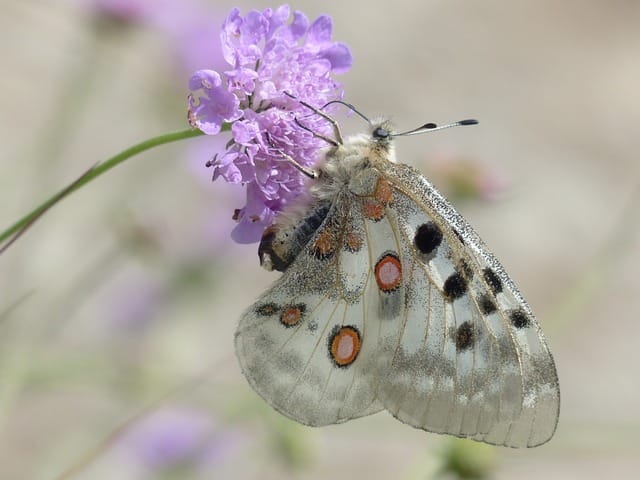How to grow Scabiosas
Scabiosas, also known as pincushion flowers, are beautiful perennial plants that produce attractive flowers in various colors

In this article:
- Introduction to Scabiosas Flower
- Choosing the Right Scabiosa Varieties
- Preparing the Soil for Scabiosas
- Planting Scabiosas: Step-by-Step Guide
- Watering and Fertilizing Scabiosas
- Providing Proper Sunlight and Temperature for Scabiosas
- Pruning and Deadheading Techniques for Scabiosas
- Controlling Pests and Diseases in Scabiosas
- Propagating Scabiosas: Seeds and Cuttings
- Winter Care for Scabiosas
- Enjoying the Blooms: Scabiosas in Gardens and Bouquets
- Troubleshooting Common Issues with Scabiosas
- Frequently Asked Questions about Growing Scabiosas
- Conclusion and Final Tips for Growing Scabiosas
Introduction to Scabiosas Flower
Scabiosas, also known as pincushion flowers, are beautiful perennial plants that produce attractive flowers in various colors. They are native to Europe and can be a delightful addition to any garden or bouquet. This article will guide you through the process of successfully growing scabiosas.
Choosing the Right Scabiosa Varieties
Before starting your scabiosa garden, it's essential to choose the right variety for your preferences and growing conditions. Some popular scabiosa varieties include 'Butterfly Blue,' 'Fama Blue,' and 'Pink Mist.' Consider factors like color, growth habit, and flower size when selecting your scabiosas.
Preparing the Soil for Scabiosas
Scabiosas thrive in well-drained soil with a pH level between 6.0 and 7.0. Prepare the soil by removing any weeds, rocks, or debris. Incorporate organic matter such as compost to improve soil fertility and drainage.
Planting Scabiosas: Step-by-Step Guide
- Choose a location that receives at least six hours of direct sunlight daily.
- Dig a hole twice as wide and deep as the root ball of your scabiosa plant.
- Place the scabiosa plant in the hole and backfill with soil, gently firming it around the roots.
- Water the plant thoroughly.
Watering and Fertilizing Scabiosas
Regular watering is crucial for the healthy growth of scabiosas. Water them deeply once or twice a week, ensuring that the soil remains moist but not overly saturated. Apply a balanced, slow-release fertilizer in early spring to promote vigorous growth and abundant blooms.
Providing Proper Sunlight and Temperature for Scabiosas
Scabiosas require full sun to thrive and produce vibrant flowers. They prefer moderate temperatures, ideally between 60°F and 75°F (15°C to 24°C). Protect them from extreme heat or cold, as this can negatively impact their growth.
Pruning and Deadheading Techniques for Scabiosas
Regular pruning and deadheading can prolong the blooming period of scabiosas and maintain their overall health. Remove spent flowers by cutting them back to the nearest set of leaves or stem, encouraging the growth of new blooms.
Controlling Pests and Diseases in Scabiosas
Scabiosas are generally resistant to pests and diseases. However, they can occasionally be affected by aphids, slugs, or powdery mildew. Monitor your plants regularly and take appropriate measures, such as using insecticidal soap or applying organic fungicides, to control these issues.
Propagating Scabiosas: Seeds and Cuttings
Scabiosas can be propagated using both seeds and cuttings. Collect mature seeds from the flower heads and sow them in well-prepared soil in early spring. Alternatively, take cuttings from established plants in early summer and root them in a well-drained potting mix.
Winter Care for Scabiosas
In regions with cold winters, scabiosas may require some winter protection. Apply a layer of mulch around the base of the plants to insulate the roots and prevent frost damage. Cut back the foliage to a few inches above the ground after the first frost.
Enjoying the Blooms: Scabiosas in Gardens and Bouquets
Scabiosas make stunning additions to garden beds, borders, and containers. The long-lasting cut flowers are perfect for bouquets and floral arrangements. Experiment with different colors and combine them with other flowers to create eye-catching displays.
Troubleshooting Common Issues with Scabiosas
Some common issues that you may encounter when growing scabiosas include yellowing leaves, stunted growth, and lack of blooms. These can be caused by nutrient deficiencies, inadequate watering, or poor soil conditions. Pay attention to these factors and address any problems promptly.
Frequently Asked Questions about Growing Scabiosas
- Q: How long do scabiosas bloom?
- Q: Can scabiosas tolerate drought?
- Q: When is the best time to plant scabiosas?
Conclusion and Final Tips for Growing Scabiosas
By following the guidelines in this article, you can successfully grow scabiosas and enjoy their beautiful flowers season after season. Remember to choose the right varieties, prepare the soil properly, and provide adequate sunlight, water, and care. With patience and diligence, your scabiosa garden will thrive and bring you joy for years to come!
